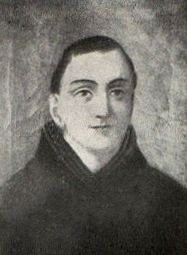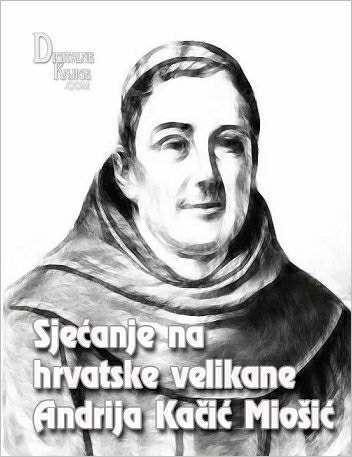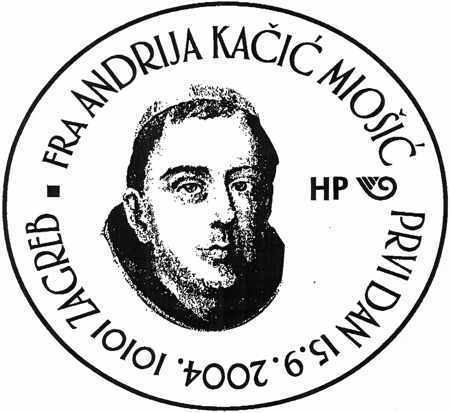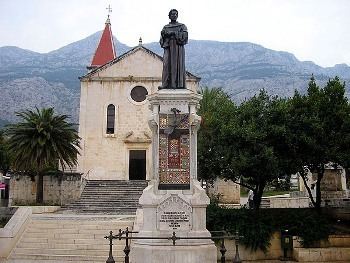Occupation Franciscan monk Ethnicity Croatian Role Poet | Nationality Venetian Name Andrija Miosic Literary movement Age of Enlightenment | |
 | ||
Born April 17, 1704
Brist near Makarska, Venetian Dalmatia (now Croatia) ( 1704-04-17 ) Education Zaostrog monastery and Buda Notable works Razgovor ugodni naroda slovinskog (Pleasant Conversation of Slavic People, 1756), a history in verse Died December 14, 1760, Zaostrog, Croatia | ||
ANDRIJA KAČIĆ MIOŠIĆ - PJESMA O BOŠNJACIMA
Andrija Kacic Miosic ([andrija katʃitɕ mioʃitɕ]; April 17, 1704 – December 14, 1760) was a Croatian poet and Franciscan monk.

Born in Brist near Makarska, he became a Franciscan monk. He was educated in Zaostrog monastery and Buda. He used to teach philosophy in Zaostrog and Sumartin on Brac.

His most important work is Razgovor ugodni naroda slovinskog (Pleasant Conversation of Slavic People, 1756), a history in verse, in which Kacic Miocic, influenced by the ideals of the Enlightenment, tried to spread literacy and modern ideas among common people. It was the most popular book in the Croatian-speaking lands for more than a century. It also played a key role in the victory of the Shtokavian dialect as the standard Croatian language. It contain poems about Skanderbeg which were basis for tragedy Skenderbeg written by Ivan Kukuljevic Sakcinski in the 19th century. They were also basis for Zivot i viteska voevanja slavnog kneza epirskog Dorda Kastriota Skenderbega written by Jovan Sterija Popovic in 1828.

Using the ten-syllable verse of folk poetry and relying on Mavro Orbini and Pavao Ritter Vitezovic, Kacic Miosic narrates and sings about the history of the Slavic peoples from the antiquity to his age. He, like Ivan Gundulic, describes the Slavic peoples from the Adriatic to the North Sea as one people. The book exalts many heroes from the famous Croatian families of the age of the Ottoman wars. Since the book includes some important folk poems, many readers considered it a folk songbook.
Pleasant Conversation is mostly didactic in tone and of little artistic value, but later it served as a valuable source of historic data. It gave inspiration for future Croatian writers.
His other works are a philosophical study in Latin and a chronicle called Korabljica (1760), where he used passages from other writers, including Vitezovic.
